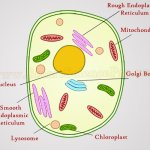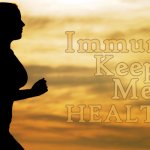
Living organisms are made up of tiny structures known as cells. As every living organism require its meal to survive, there should be some kind of transport system in all these living organisms. Classification of living organisms divides all living beings into 3 groups as Animals, Plants and Microoorganisms. I’m going to talk about Active Transport system of plants today.
There are 2 types of transport systems available in plants. One is passive transport system while the other is Active Transport system. I explained about the passive transport system in a previous post including its 4 methods of occurrence.
Both previous post and this post is related to Transpiration process of plants, because the transport system brings water into the plant while the transpiration process releases water out of the plant.
Active Transport System Means …
I said passive transport means the process of water and minerals entering to the plant without using energy of metabolism. Perhaps now you may realize the active transport means the reverse of it.
Active transport is the process of passing matter particles into a cell or out of a cell through a plasma membrane against the natural diffusion by using the energy of metabolism. Diffusion is one method of passive transport and it happens due to the concentration difference.
Sometimes water can enter to living cells while challenging to the usual concentration difference. Here’s an example to prove it.
Sea water contains higher amount of Sodium ions than Iodine ions. Then various marine plants have higher amount of iodine ions than sodium ions. You know what sodium ions don’t enter the plant even though iodine ions do.
Nitella is a fresh water plant and its cells contain Potassium Ions greater than the amount available in the surrounded water. Now suppose potassium ions enter to the plant cells by diffusion from the water outside the plant. This can happen until the concentration of potassium ions inside the cells and water becomes equal.
Because concentration of the cell ions must be low and concentration of water should be higher for the diffusion process to take place. Therefore we can conclude that the sodium ions and iodine ions enter the cell against the natural diffusion process.
Active transport occurs through carrier molecules which are a molecule type available in the plasma. There are mineral ions attached to carrier molecules enter the cytoplasm of the cell. That leads to plants to control the absorption of minerals by acquiring only the required minerals.
If you had the chance to read our plant tissues post, you know that the Xylem and Phloem tissues do the major transport jobs in a plant. The water and minerals are transported everywhere in the plant by these tissues in the roots and stem. This happens by Osmosis process and Active transport.
Structure of a Tender Root
Carolus Linnaeus is the founder of natural classification criterion and according to it, there are 2 types of plants and flowering plants and non flowering plants. We can further divide flowering plants into 2 groups,
– Monocotyledonous Plants
– Dicotyledonous Plants
You can easily notice the structural differences of these 2 plants. External layer of the plants known as Epidermis which is formed with a single layer of cells. Certain cells have protrusions coming out known as root hairs. Cortex can be found next – Inner Layer – to the Epidermis which has the circular cells. Intercellular spaces are seen between these 2 layers.
When you go further inside after the Cortex layer, you can find the Endodermis which hosts the barrel shaped cells which are formed closed to each other. Therefore, they don’t have any intercullar spaces between them.
After the Endodermis, it’s the Pericycle layer made out of single layer of cells. Underneath this layer you can find the vascular system of roots. It contains the Xylem layer that looks like a star and in between it, the phloem layer is visible.
Pith is in the center and while the cambium is in between above 2 layers. Above whole layer explanation is about Dicotyledonous plant roots before secondary thickening state. These roots thicken with age and hence the structure may change.
Monocotyledonous plant tender root structure is also similar to Dicot one. However there are no any secondary thickening, root thicken aging or cambium in these roots.
Adaptations of Roots For Absorbing Water & Minerals
Do you remember the transpiration process too had given some adaptations to plants for reducing the transpiration rate. Similarly, absorption process too has given some adaptations as mentioned below.
- Appearance of root hairs in the plants.
- Availability of thin epidermis layer at the tip of roots.
- Monocotyledonous plants contain high amount of fibrous roots to absorb more water.
- Dicotyledonous plants have a big tap root with so many lateral roots.
Ascent of Sap
Ascent of sap in Xylem tissue is a method of active transport occurs. Ascent of sap means there is a continuous water column coming from the roots to the top until leaves. No air bubbles in this water column and because of this xylem tissue is like a water pipe.
There are 2 reasons for this process to occur continuously.
1. Cohesion → Water particles are attracted to each other.
2. Adhesion → water particles are tightly attached to xylem wall.
Water flows from roots to leaves under the above conditions for the transpiration process. Therefore it is known as Transpiration Pull.
Minerals in the soil are dissolved in water as their salts. Root system of a plant exerts a push on this water to send it upward through xylem tube. It is known as Root Pressure of a plant. Interesting fact about root pressure is, it can push water up to a maximum height of 18m!
Water rises beyond that height because of transpiration pull. So what you think about Active transport system of plant life? Your comments and shares are always a pleasure for me.








Leave a Reply